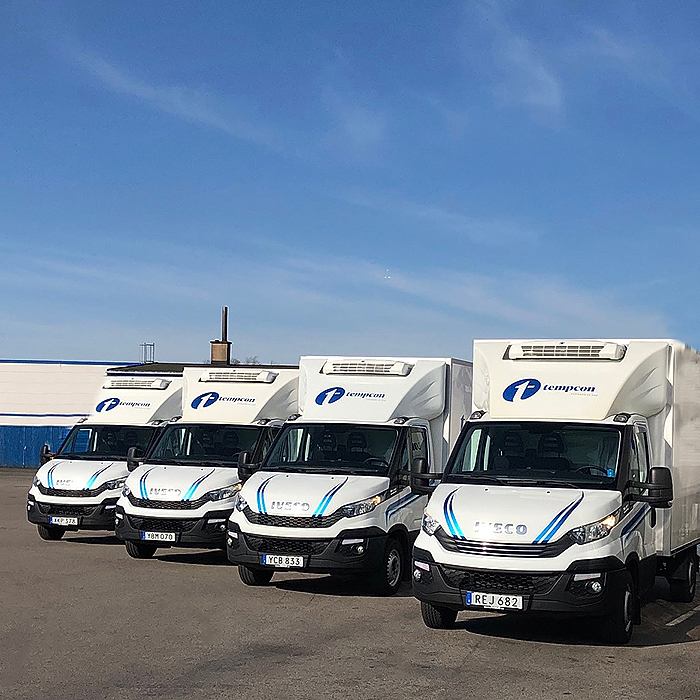About a year ago, Tempcon and its subsidiary Tommy Nordbergh Åkeri put one of Sweden’s first 100 percent heavy trucks in daily operation in Helsingborg. The Group already has a large number of gas cars in the business, but the impact on alternative fuels in light vehicles has not yet reached the same levels in the industry.
During the pandemic, the number of so-called last mile transports has increased sharply as a result of increased e-commerce and more people choosing home delivery of, for example, grocery bags. This is a trend that has come to stay. Most of these transports are performed by light, diesel vehicles. To reduce the climate impact even from light vehicles, as clean fuel as possible must be used. The best alternatives for this at present are electricity and biogas. Increased use of these fuels reduces emissions of greenhouse gases and other air pollutants while also reducing noise levels.
Why then are not more light electric and gas vehicles used in this type of distribution already today? A light truck may have a total weight of a maximum of 3 500 kg. to be driven with a B driving license. If such a vehicle is equipped with electric or gas operation, the load capacity decreases by between 30-60 percent due to the weight from the battery and gas tank. This means that if the same amount of goods is to be moved, a corresponding increase in the number of vehicles is required as the lost cargo weight. More vehicles require more staff and create increased congestion. The alternative is to drive with larger vehicles that require C-authorization, but these require more space, which can be a challenge in cramped residential areas, there is a shortage of C-drivers and it is cost-driving.
One way to address this challenge is that Sweden also complies with EU Directive 2018/645. The directive allows member states to introduce an exemption that allows drivers with a B driving license to drive light trucks up to 4 250 kg. provided that the extra weight is justified by alternative fuels. The exemption has already been implemented in several member countries such as Denmark, Austria, the United Kingdom and Spain, and more countries are on the way. Our neighboring country Norway has also introduced such a regulatory framework.
In December last year, Minister of Infrastructure Tomas Eneroth commissioned the Swedish Transport Agency to make an impact assessment of what it would mean to introduce the directive in Sweden as well. The work must be completed by 15 November this year. For us at Tempcon Group, the question of finding solutions that have a smaller climate impact is always a priority. Unfortunately, today we are hindered in that development towards a fossil-free vehicle fleet at all stages of the driving license requirements that apply with subsequent weight restrictions. We now hope that the impact assessment shows that, like our neighboring countries, we can comply with EU Directive 2018/645 and allow the driving of light trucks up to 4 250 kg. on a B driving license. Something that would enable more deliveries with electric and gas-powered light trucks, which in turn increases the incentives for a transition to fossil-free transport.
